Types of Kayaks and Which to Choose
It's time to get paddling. Kayaking is one of the funnest water activities out there and it's only growing in popularity.
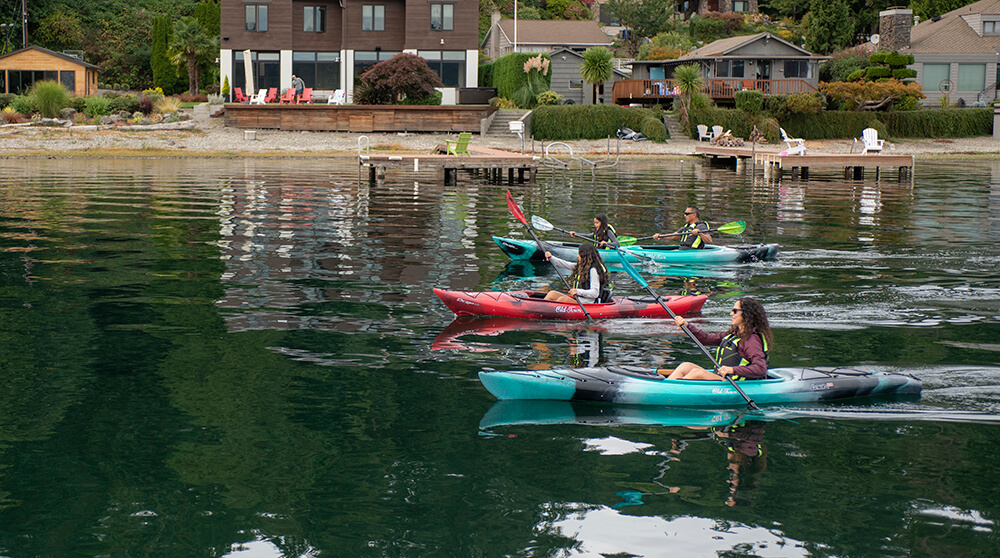
Whether you're looking for a relaxing afternoon on a tranquil lake or an adrenaline-pumping adventure down a river, kayaks offer plenty of opportunities for outdoor fun.
Which kayak types are the best? Use this guide to learn more about different types of kayaks and which types might be right for you.
Solo Kayaks
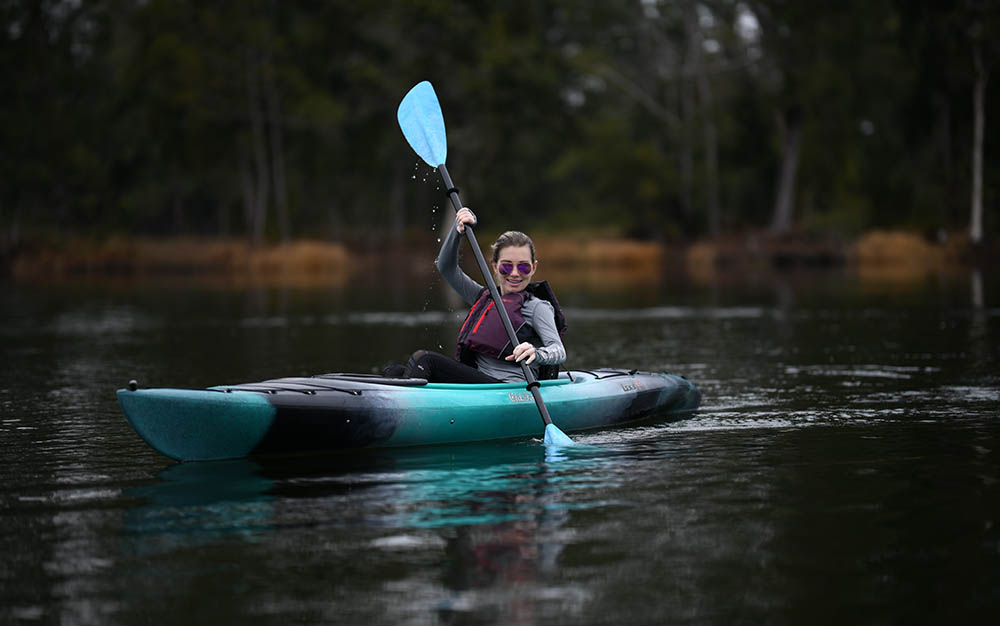
These kayaks are designed for one paddler. They're typically lightweight, easy to maneuver and great on lakes or calm rivers due to their speed capabilities.
The most popular kayaks are solo kayaks or single-person kayaks, with the advantage being that only one person needs to go out on the water. Solo kayaks are popular among kayakers because they allow them to design their own route and speed without having to keep someone else in mind.
Generally, solo kayaks are lighter than similar tandem kayaks and often less expensive.
Tandem Kayaks

Designed for two people, tandem kayaks are designed for casual kayaking. However, some types of tandems can be used for more advanced outings, like kayak fishing or sea kayaking.
Tandems are excellent options for those who want to paddle with friends or family members, as they allow multiple people the chance to enjoy the same activity at once rather than taking turns. They also have the advantage of allowing two paddlers with different skill levels to work together.
Most kayaks, regardless of type, have a tandem version, ranging from recreational to racing. More commonly are those with two separate cockpits that are best maneuvered with two people.
A fun benefit of tandem kayaks is that they are ideal for dog lovers who want to take their pets on the water. There's plenty of room for even larger breeds, so they'll be able to enjoy the water when you're out.
Sit-On-Top Kayaks
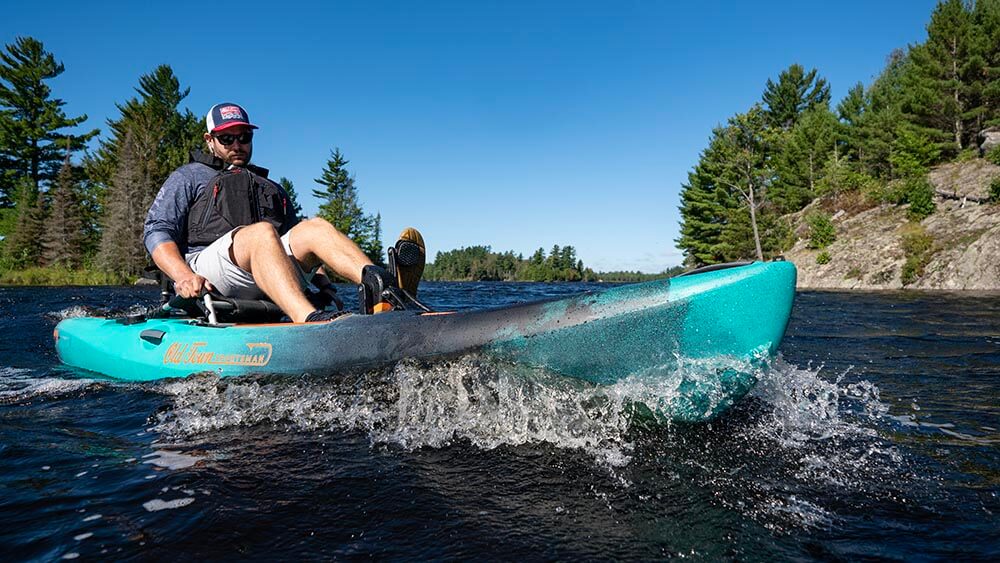
Sit-on-top kayaks are a popular type of recreational kayak as they provide a stable and comfortable paddling platform, allowing you to confidently explore any body of water. Sit-on-top kayaks come in a wide range of designs, including recreational, fishing, and tandem.
Sit-on-top kayaks have two primary advantages. The first is that they won't fill with water if flipped over. This makes them simpler to get back into while out on deep water, one of the reasons why sit-on-tops are a safer option for a less experienced recreational kayaker.
The second advantage is that they are easy to move around on, allowing users to easily grab items like a fishing rod, cooler, and other gear. For this reason, most fishing kayaks are sit-on-top designs.
Additionally, they have large open cockpits for those who just want to get out there and enjoy their time on the water with no worries about learning any difficult skills or running into any danger. They're stable and easy enough that they make a great beginner kayak for those who are just starting out.
Sit-Inside Kayaks
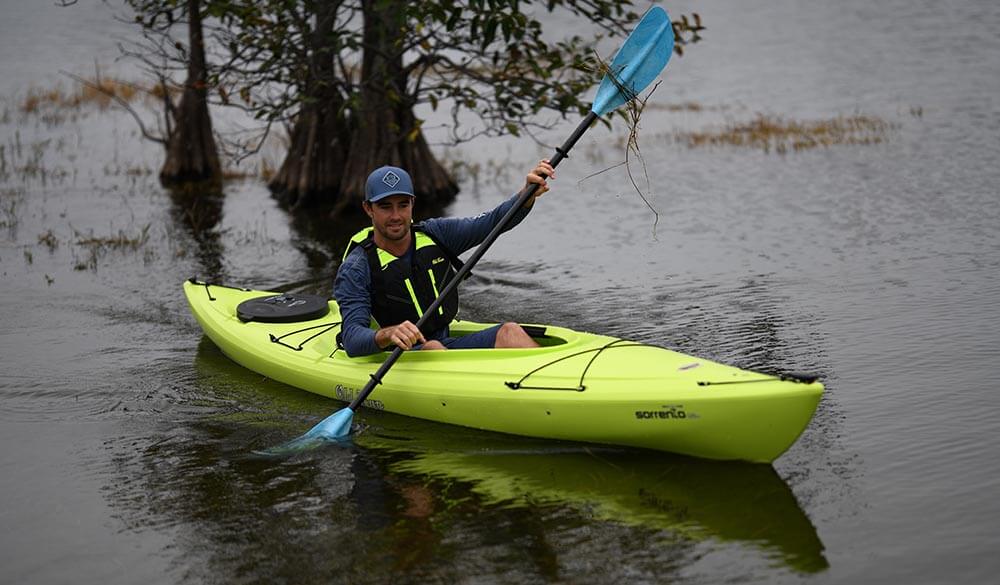
Sit-inside kayaks come in a wide range of designs that include touring, whitewater, recreational, tandem, and racing.
A major advantage of sit-inside kayaks is their large storage capacity and the sheer number of types available. Sit-inside kayaks are often equipped with a sprayskirt, which allows them to be closed off from the elements.
Compared to sit-on-top kayaks, sit-inside kayaks can be warmer and dryer, making it easier to paddle in colder conditions. Depending on the design and type, a closed cockpit can protect a kayaker from rain and turbulent waters.
Recreational Kayaks
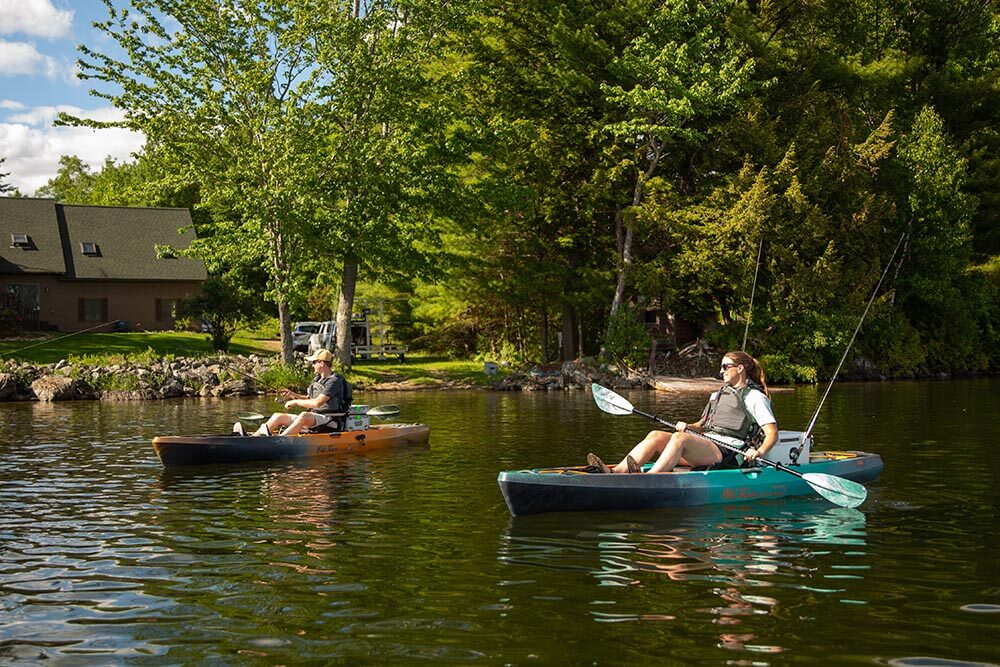
Recreational kayaks are typically very stable in calm waters with little to no waves. They can be used effectively by people of all sizes, large or small. Stability is important for a larger person-read our guide on the best kayaks for big guys and gals.
Recreational kayaks are comfortable, fun, and built to last. Many recreational kayaks come with basic features and are reasonably priced. Very basic recreational kayaks are simply a molded kayak hull with a seat and no more. More elaborate recreational kayaks feature some touring must-haves, like extra storage space, adjustable foot braces, and deck rigging.
Just like any other kayak, those made for recreational purposes come in various lengths and designs. Which recreational kayak you choose will ultimately depend on the type of kayaking you plan on doing.
On average, most of these kayaks are between 9–14 feet and are wider than most touring designs. There are few that are shorter than nine feet, and most are no longer than 14. Kayaks that are shorter than 12 feet are lighter but slower, while longer kayaks are faster but heavier. If you're planning on covering a lot of water, 12 feet or longer is the way to go. Boats shorter than this are lighter and less expensive, though noticeably slower.
Touring Kayaks
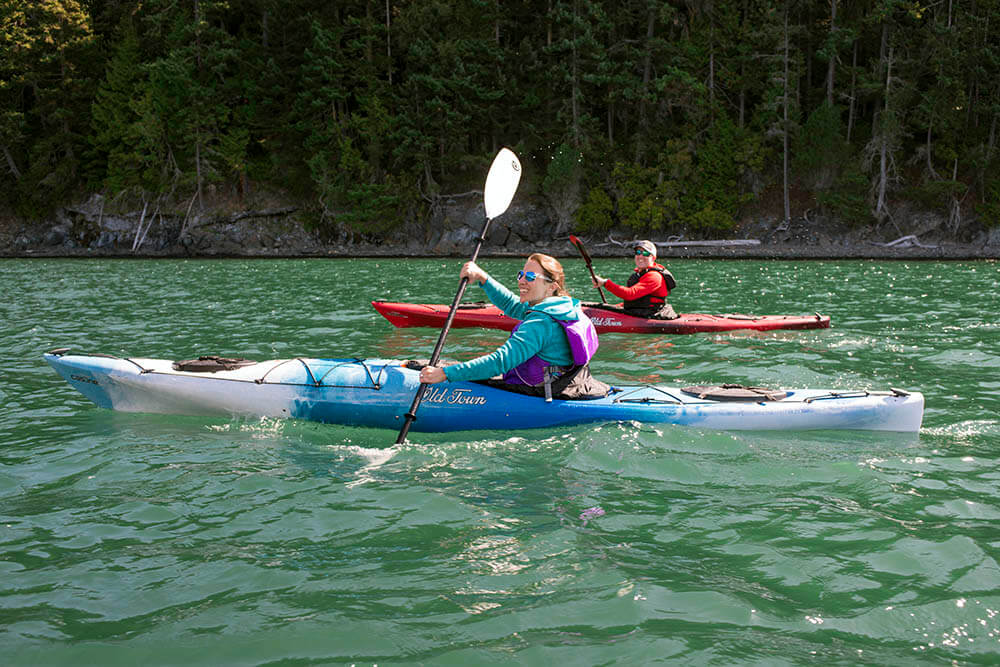
For those who plan on kayaking for long distances over multiple days, you will want to consider a touring kayak. Touring kayaks are designed with a focus on speed and efficiency versus stability. Touring kayaks are generally longer than 11 feet in length but can vary depending on what you want to do with them. For example, if you're looking to paddle the lakes and coastlines far from shore, a longer vessel will allow you to cover more water.
Fishing Kayaks
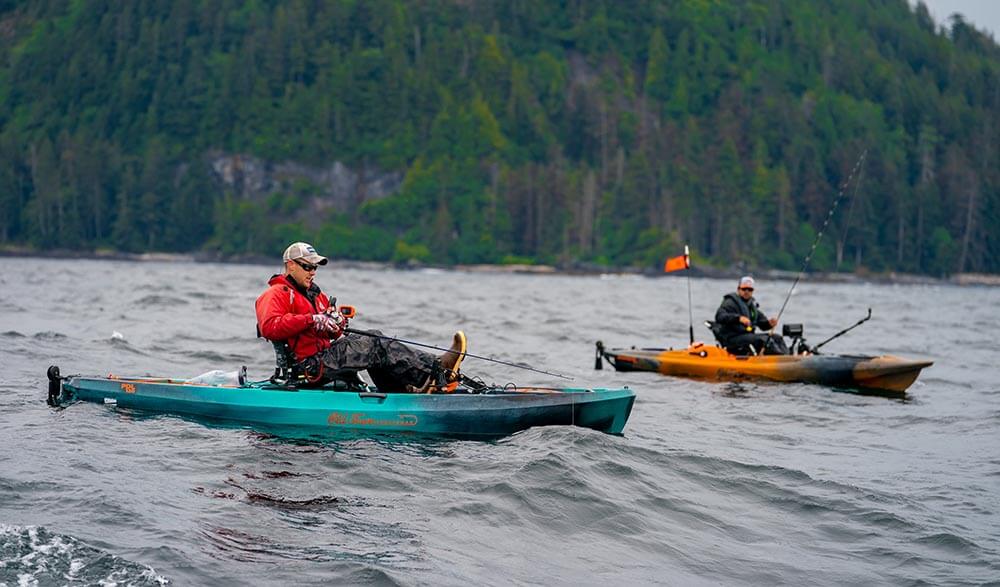
There are many reasons that kayak fishing has grown in popularity over the last few years. Fishing kayaks are more portable and convenient than larger motorboats, letting you go wherever you want and reach places that other boats can't.
Kayaks also tend to disturb the water less than larger boats, so you worry less about scaring fish away. Pedal-powered fishing kayaks let propel and control your kayak with your feet, leaving your hands free for fishing. Motorized fishing kayaks can give anglers a competitive edge, allowing you to cover more water and use intelligent features like spot-lock and Autopilot
Fishing kayaks are designed with everything an angler may need for fishing out on the water. These kayaks are often equipped with rod holders, storage space for tackle, and mounting for fish finders.
Construction types vary, but fishing kayaks can be made from a range of materials, including plastic, fiberglass or inflatable types. The choice will depend on your budget as well as how much weight you have to carry out onto the water.
Pedal Kayaks
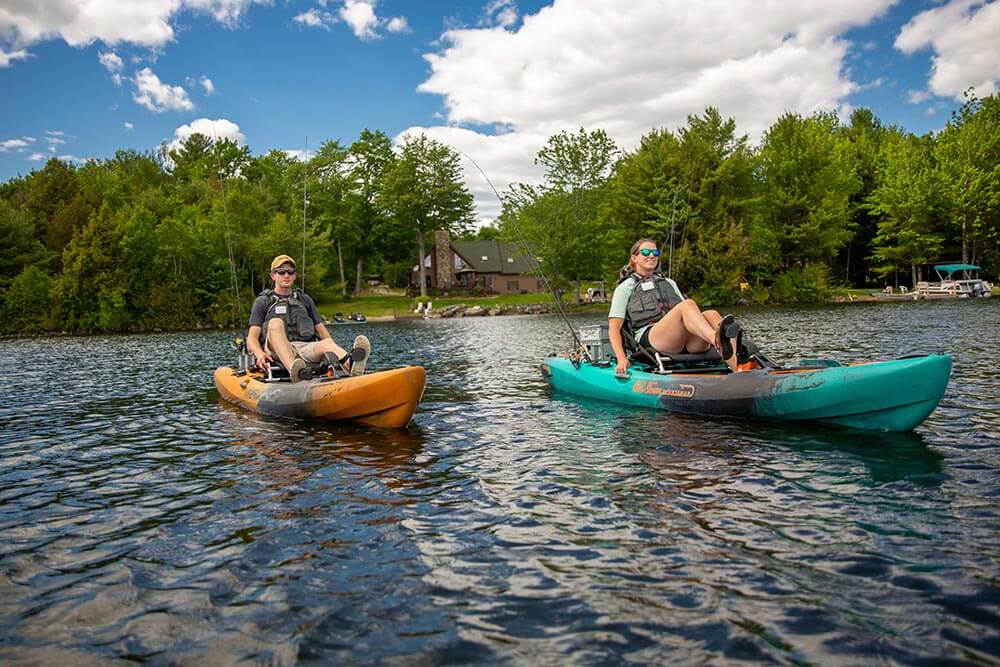
Pedal kayaks are propelled by the kayaker's legs instead of a paddle. Most pedal systems are similar to a recumbant bike. You can still use a paddle on a pedal kayak, and most come with a mount to store it out of the way when not in use.
Pedal kayaks have adjustable seats to accommodate kayakers of different heights. Pedal kayaks offer a mostly hands-free experience (you'll still need a hand to steer by controlling a rudder), letting you fish, take photos, or use a phone as you continue to move through the water.
Major benefits of pedal-powered kayaks include:
- Hands-free and easy, user-friendly propulsion
- A more efficient trip, leading to less fatigue
- More powerful thrust
- Faster speed (in most conditions)
- Quiet pedaling, perfect for fishing
Pedal kayaks are sturdy, versatile options for people who enjoy recreational paddling or leisure time on the water.
Motorized Power Kayaks
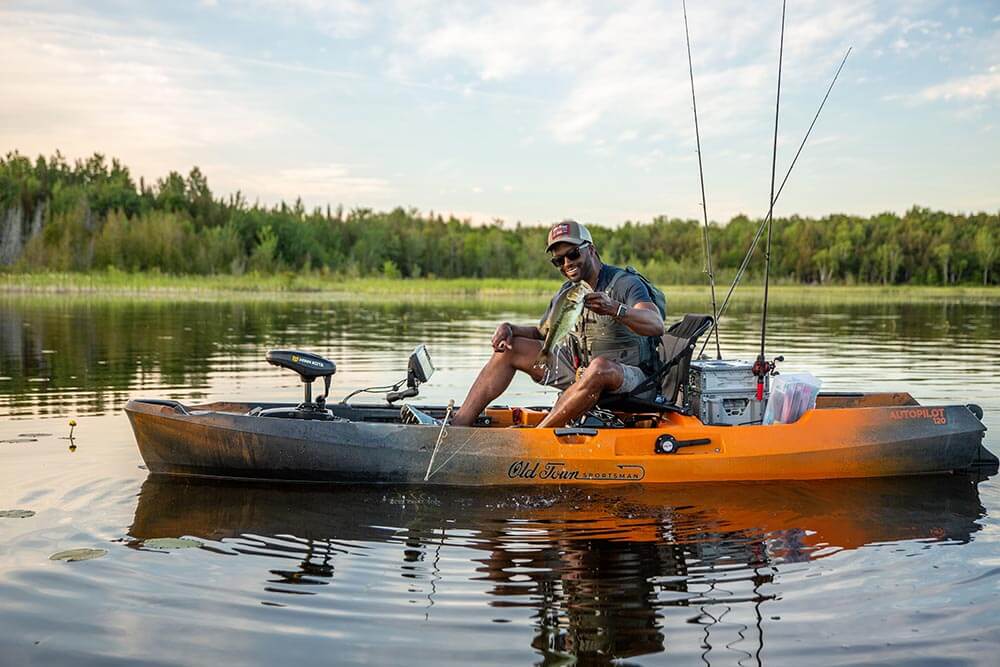
Just like a pedal kayak, motorized kayaks use a mostly hands-free propulsion method. However, instead of pedals, the kayak is propelled by an electric motor.
Many kayaks can be fitted with a trolling motor, but the best motorized kayaks have integrated motor designs, like the Old Town Sportsman AutoPilot and Old Town Sportsman 106 Powered by Minn Kota.. Motorized kayaks are powered by deep cycle marine batteries, and many are also compatible in saltwater. There are various types of motors and types of kayaks for different purposes. Some kayakers use trolling motors because they do not want to make noise when fishing, and some use them to go farther with less physical effort.
Hunting Kayaks
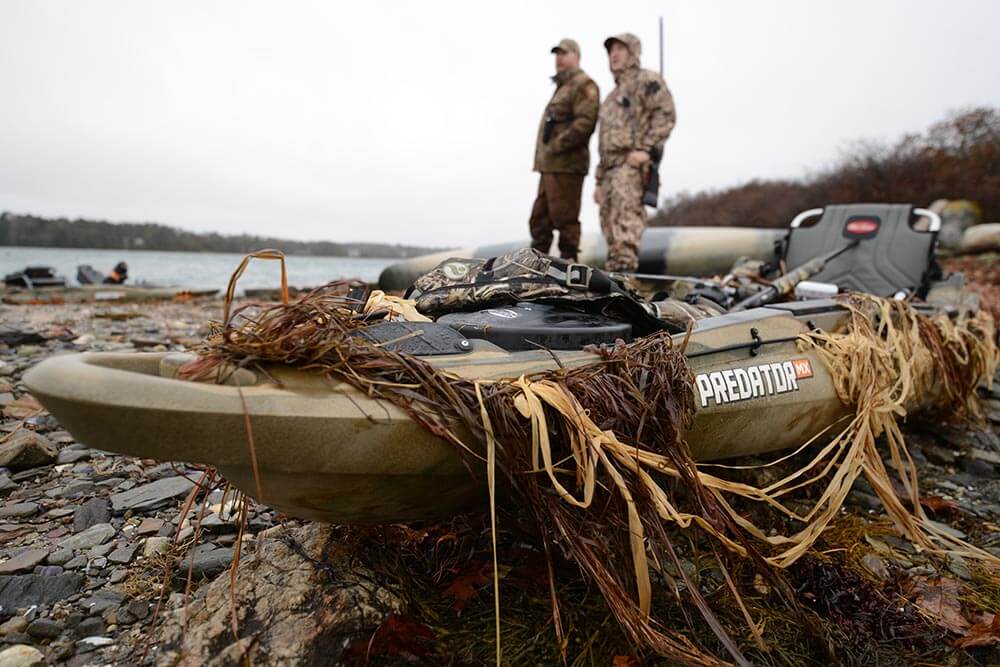
The popularity of kayaking hunting has grown over the years, and for good reason. It gives hunters access to locations that can't be reached by boat or foot.
The perks of hunting-everything from waterfowl to big game-from a kayak include how quiet it is compared to a boat and that you are able to reach places that you wouldn't normally if you were hunting on land. This allows kayakers to have more successful hunting trips.
While most hunters use kayaks for duck or waterfowl hunting, you can also shoot larger land game from a kayak, quietly sneaking up on them from the water. There are many hunting kayak options on the market, so keep these considerations in mind:
- Stability and tracking
- Maneuverability
- Durability
- Storage
- Safety
- Camouflage and concealment
Inflatable Kayaks
Inflatable kayaks are made from hard-wearing, puncture-resistant PVC and synthetic rubbers. They have grown in popularity in recent years among recreational kayakers but are also used when river or whitewater kayaking.
There are many advantages to an inflatable kayak which include a lightweight design, increased stability due to wider kayak beams, and buoyancy. Storage and transportation is easy with these kayaks, too. They can be deflated and rolled up, making a kayak mount on your vehicle unnecessary.
While an inflatable kayak is never going to match the performance of hard shells, they're a great option for beginners. They can be harder to track and often slower, so if you're used to a more traditional kayak, it may take some getting used to.
Folding Kayaks
Foldable kayaks, sometimes referred to as collapsible kayaks, is the difference between hard-shell and inflatable designs.
They have a rigid frame, but as the name suggests, they are foldable and easy to transport. The frame is flexible and has either a waterproof fabric that stretches over it or folding panels.
Folding kayaks also have a number of advantages over traditional types. They're usually faster, more maneuverable and they provide better storage options as the frame can carry additional gear inside it. They are ideal for those who like to hike and travel and should be easy to collapse and take with you wherever your adventure is headed.
There's a Kayak for Everyone

Hitting the water is a great way to spend your time and there's a kayak out there for everyone. Whether you're into fishing, paddling or just cruising around on the lake, use this guide to help you make your decision.
If you need a little extra assistance choosing a kayak this easy-to-use kayak selector can help guide you through the process.






